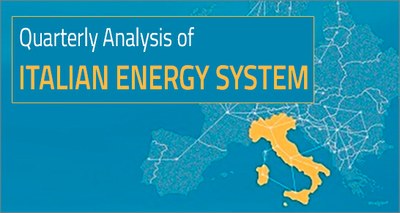Energy: Italy, dramatic drops in consumption, emissions and prices in the second quarter
17/9/2020
In May electric renewables at an all-time high, cover 50% of demand
 A dramatic drop in energy consumption (-22%) occurred in the second quarter of 2020 compared to the same period of 2019. The negative peak was reached in April (-30%) in coincidence with the lockdown, while on a half-year basis there was a 14% decrease compared to the first half of 2019.
A dramatic drop in energy consumption (-22%) occurred in the second quarter of 2020 compared to the same period of 2019. The negative peak was reached in April (-30%) in coincidence with the lockdown, while on a half-year basis there was a 14% decrease compared to the first half of 2019.
Moreover, a sharp drop in electricity consumption (-13%) increased the weight of renewable sources, which in May covered over 50% of electricity demand (20% from wind and solar), reaching a new all-time high.
This is what emerges from the ENEA quarterly analysis of the Italian energy system, which also shows a significant decrease in carbon dioxide emissions (-26% in the second quarter and -17% in the first half).
“The fall in consumption and emissions is unprecedented. And, even in the optimistic hypothesis of a return to normality in the second half of the year, at the end of 2020 the decline will probably be higher than the negative record reached in 2009 (-6% of energy consumption", Francesco Gracceva, the ENEA researcher in charge of the Analysis, explained .
Emissions fell more than energy consumption due to a significant reduction of fossil fuels with greater carbon intensity, such as coal and oil”.
In the second quarter, in fact, oil demand fell by 30%, natural gas by 18% and electricity imports by 70% against a 7% increase in renewable sources. However, preliminary estimates show a recover in energy consumption in July compared to previous months - even if still much lower than the levels in the same month of 2019 - driven by road traffic, now close to last year levels as concerns heavy vehicles and air traffic, which doubled in July compared to the previous month.
The exceptional conditions which mark the first part of the year consolidated the improvement (+ 15%) begun in the second half of 2019, of the synthetic index ISPRED, developed by ENEA to monitor the energy system transition based on the trend of prices, safety and emissions levels.
As for prices, the index shows a significant increase (+ 20%) due to the exceptionally low levels reached in the wholesale gas and electricity markets, with a decline in the historical spreads of Italian retail prices compared to European ones.
Electricity showed an average 20% drop for the different consumption classes of non-domestic users. However, for the third quarter, a break in current trends is expected due to a rise of dispatch costs in relation to the need to ensure the safety of the electricity system.
As concerns natural gas, small industrial consumers benefited from a 27% price reduction compared to the same period in 2019, with a forecast for the third quarter at the lowest levels of the last seven years. Domestic consumers recorded a 25% drop on the previous quarter.
The major crisis in energy demand has instead led to an overall worsening of the ISPRED index as concerns the safety of the energy system (-10%). "The reason is to be found above all in the refining sectors - which suffered a sharp decline in the use of plants with negative margins - and in a safe management of the electricity system which, even without evident critical events, showed problems linked to the growing penetration of intermittent renewable sources ”, Gracceva pointed out.
As for decarbonisation, the collapse of CO2 emissions led to a significant improvement in this component of the index (+ 30%). "However, it is possible that in a scenario of economic activity returning to pre-crisis levels, the emissions trend will deviate again from the 2030 targets if the recent years trend of modest decoupling between economic performance and consumption is confirmed”, Gracceva concluded.
The unabridged Analysis is available at: https://www.enea.it/it/seguici/pubblicazioni/analisi-trimestrale-del-sistema-energetico-italiano/
